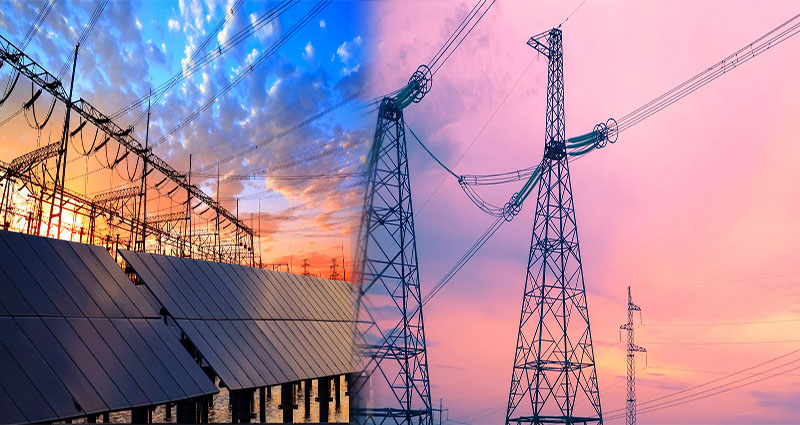In our quest for a more sustainable future, energy-efficient homes are becoming increasingly popular. One crucial aspect of achieving energy efficiency is the integration of smart grids into residential buildings. In this article, we will explore the concept of smart grid integration and its benefits for creating energy-efficient homes.
Understanding Smart Grid Integration
A smart grid is an advanced electrical grid that incorporates digital communication and automation technology. It enables two-way communication between the utility provider and consumers’ homes, allowing for real-time information exchange on electricity usage, prices, and grid conditions. Smart grid integration involves connecting residential buildings to this intelligent grid system, allowing homeowners to optimize their energy consumption and reduce wastage.
Benefits of Smart Grid Integration
Smart grid integration offers numerous advantages for energy-efficient homes:
- Energy Management: Smart grid integration empowers homeowners to have greater control over their energy usage. With real-time data on electricity consumption, they can make informed decisions to adjust their energy usage patterns, using electricity when it is most cost-effective or during off-peak periods.
- Demand Response: Through smart grid integration, homeowners can participate in demand response programs. These programs incentivize users to reduce or shift their electricity consumption during periods of high demand or grid stress. This helps to stabilize the grid, reduce the risk of blackouts, and minimize the need for additional power generation.
- Renewable Energy Integration: Smart grids facilitate the seamless integration of renewable energy sources, such as solar panels or wind turbines, into residential buildings. With real-time data, homeowners can optimize the use of their renewable energy systems, such as charging batteries during times of excess generation and using stored energy during peak demand periods.
- Cost Savings: By leveraging smart grid integration, homeowners can identify energy-saving opportunities and reduce their electricity bills. They can avoid peak pricing periods or take advantage of time-of-use tariffs, which offer lower rates during specific time periods. Additionally, optimized energy consumption reduces strain on the grid, potentially lowering electricity costs for all consumers in the long run.
- Grid Resilience: Smart grid integration enhances the resilience of the electrical grid. By monitoring and managing energy consumption, the grid can better respond to outages, load imbalances, and other disruptions. Homeowners can also receive real-time information on the status of the grid, allowing them to prepare and make informed choices during power outages or emergency situations.
Smart Grid Integration Technologies
To enable smart grid integration in homes, several technologies and devices are utilized:
- Smart Meters: These digital meters measure electricity consumption at regular intervals and provide real-time data to both homeowners and utility providers. Smart meters facilitate accurate billing, demand response programs, and energy usage monitoring.
- Home Energy Management Systems (HEMS): HEMS devices provide homeowners with detailed information on their energy consumption, often displayed through user-friendly interfaces. They allow users to remotely control and manage their energy-consuming devices, optimizing energy usage and increasing efficiency.
- Energy Storage Systems: Batteries or other energy storage systems can be integrated into homes to store excess energy generated from renewable sources. These stored energy reserves can be used during peak demand periods or in the event of a power outage.
- Smart Appliances and Devices: Through connectivity, appliances and devices can communicate with the smart grid, allowing for coordinated energy usage. For example, a smart thermostat can adjust heating or cooling based on real-time pricing or demand response signals.
Considerations for Smart Grid Integration
While the benefits of smart grid integration are substantial, there are considerations to keep in mind:
- Data Privacy and Security: With increased data exchange and communication, ensuring the privacy and security of personal information becomes critical. Robust security measures must be in place to protect consumer data and prevent unauthorized access.
- Compatibility and Interoperability: As smart grid technologies evolve, ensuring compatibility and interoperability among devices and systems becomes crucial. Standards and protocols need to be established to enable seamless integration and operation.
- Consumer Education and Engagement: Effective smart grid integration requires educating homeowners about the benefits and functionalities of these technologies. Engaging consumers and promoting energy-conscious behavior will maximize the potential of energy-efficient homes.
Smart grid integration offers a gateway to energy-efficient homes. By connecting residential buildings to advanced grid systems, homeowners can actively manage their energy consumption, reduce costs, and contribute to a more sustainable energy future. With ongoing advancements and increased adoption, smart grid integration will continue to revolutionize the way we consume and manage energy in our homes.












